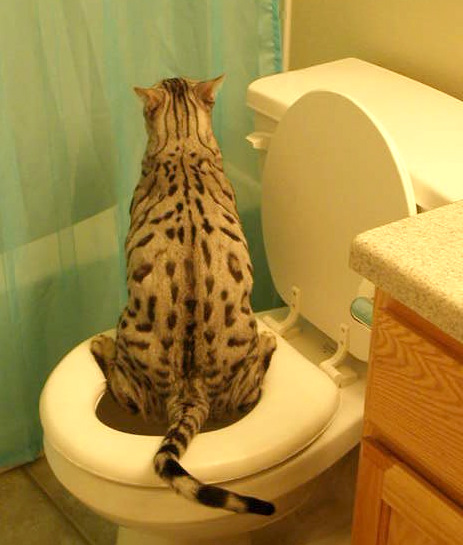Why You Must Never Flush Cat Poop Down Your Toilet - Critical Facts
Why You Must Never Flush Cat Poop Down Your Toilet - Critical Facts
Blog Article
This article which follows pertaining to How to Dispose of Cat Poop and Litter Without Plastic Bags is seriously insightful. Don't overlook it.
Intro
As feline owners, it's essential to be mindful of exactly how we deal with our feline pals' waste. While it may seem practical to purge pet cat poop down the commode, this practice can have damaging repercussions for both the setting and human wellness.
Ecological Impact
Flushing pet cat poop presents dangerous microorganisms and parasites into the supply of water, positioning a substantial risk to aquatic communities. These contaminants can adversely affect aquatic life and concession water quality.
Health Risks
Along with environmental problems, purging pet cat waste can likewise pose health threats to human beings. Pet cat feces might have Toxoplasma gondii, a bloodsucker that can create toxoplasmosis-- a potentially severe illness, especially for pregnant females and people with damaged body immune systems.
Alternatives to Flushing
The good news is, there are safer and a lot more liable methods to throw away feline poop. Take into consideration the following alternatives:
1. Scoop and Dispose in Trash
One of the most typical approach of dealing with pet cat poop is to scoop it right into a naturally degradable bag and toss it in the garbage. Make certain to make use of a dedicated litter inside story and take care of the waste promptly.
2. Use Biodegradable Litter
Choose biodegradable feline litter made from materials such as corn or wheat. These litters are environmentally friendly and can be securely disposed of in the trash.
3. Hide in the Yard
If you have a backyard, take into consideration burying cat waste in an assigned area away from vegetable yards and water sources. Make certain to dig deep enough to prevent contamination of groundwater.
4. Mount a Pet Waste Disposal System
Invest in a pet dog garbage disposal system especially developed for cat waste. These systems use enzymes to break down the waste, reducing odor and ecological impact.
Final thought
Responsible family pet possession prolongs past supplying food and shelter-- it likewise entails proper waste administration. By avoiding purging pet cat poop down the toilet and selecting alternate disposal techniques, we can decrease our environmental impact and protect human wellness.
Why Can’t I Flush Cat Poop?
It Spreads a Parasite
Cats are frequently infected with a parasite called toxoplasma gondii. The parasite causes an infection called toxoplasmosis. It is usually harmless to cats. The parasite only uses cat poop as a host for its eggs. Otherwise, the cat’s immune system usually keeps the infection at low enough levels to maintain its own health. But it does not stop the develop of eggs. These eggs are tiny and surprisingly tough. They may survive for a year before they begin to grow. But that’s the problem.
Our wastewater system is not designed to deal with toxoplasmosis eggs. Instead, most eggs will flush from your toilet into sewers and wastewater management plants. After the sewage is treated for many other harmful things in it, it is typically released into local rivers, lakes, or oceans. Here, the toxoplasmosis eggs can find new hosts, including starfish, crabs, otters, and many other wildlife. For many, this is a significant risk to their health. Toxoplasmosis can also end up infecting water sources that are important for agriculture, which means our deer, pigs, and sheep can get infected too.
Is There Risk to Humans?
There can be a risk to human life from flushing cat poop down the toilet. If you do so, the parasites from your cat’s poop can end up in shellfish, game animals, or livestock. If this meat is then served raw or undercooked, the people who eat it can get sick.
In fact, according to the CDC, 40 million people in the United States are infected with toxoplasma gondii. They get it from exposure to infected seafood, or from some kind of cat poop contamination, like drinking from a stream that is contaminated or touching anything that has come into contact with cat poop. That includes just cleaning a cat litter box.
Most people who get infected with these parasites will not develop any symptoms. However, for pregnant women or for those with compromised immune systems, the parasite can cause severe health problems.
How to Handle Cat Poop
The best way to handle cat poop is actually to clean the box more often. The eggs that the parasite sheds will not become active until one to five days after the cat poops. That means that if you clean daily, you’re much less likely to come into direct contact with infectious eggs.
That said, always dispose of cat poop in the garbage and not down the toilet. Wash your hands before and after you clean the litter box, and bring the bag of poop right outside to your garbage bins.
https://trenchlesssolutionsusa.com/why-cant-i-flush-cat-poop/

Do you appreciate reading about How to Dispose of Cat Poop and Litter Without Plastic Bags? Put feedback directly below. We would be delighted to find out your views about this review. We are looking forward that you come back again soon. Sharing is nice. Helping others is fun. Bless you for your time. Visit us again soon.
Call Report this page